kottke.org posts about photography
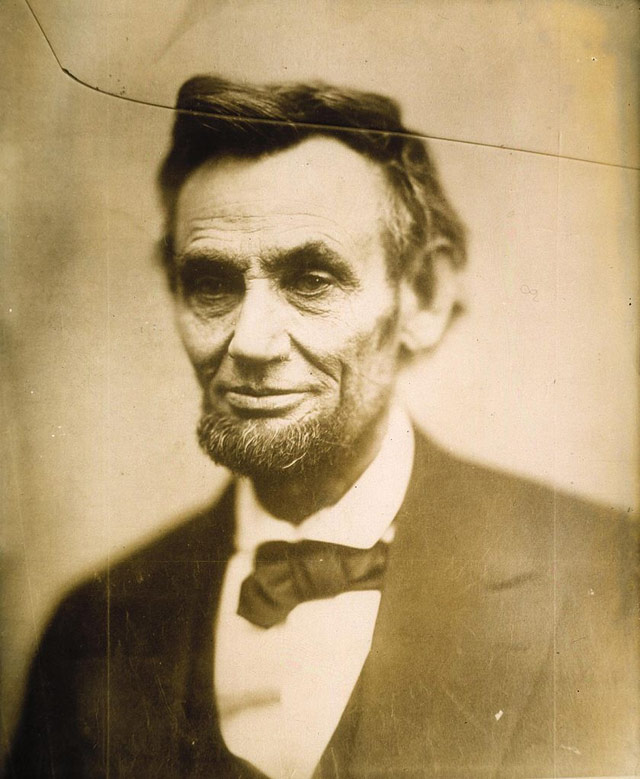
Errol Morris is at it again, publishing book-length blog posts for the NY Times. This time, he’s examining the photograph evidence of Abraham Lincoln and, I think, what those photos might tell us about Lincoln’s death. Here’s the prologue and part one (of an eventual four).
My fascination with the dating and interpretation of photographs is really a fascination with the push-pull of history. Facts vs. beliefs. Our desire to know the origins of things vs. our desire to rework, to reconfigure the past to suit our own beliefs and predilections. Perhaps nothing better illustrates this than two radically different predispositions to objects — the storyteller vs. the collector.
For the collector the image with the crack [in one of Lincoln’s photographs] is a damaged piece of goods — the crack potentially undermining the value of the photograph as an artifact, a link to the past. The storyteller doesn’t care about the photograph’s condition, or its provenance, but about its thematic connections with events. To the storyteller, the crack is the beginning of a legend — the legend of a death foretold. The crack seems to anticipate the bullet fired into the back of Lincoln’s head at Ford’s Theater on Good Friday, April 14, 1865.
It should have a name. I call it “the proleptic crack.”

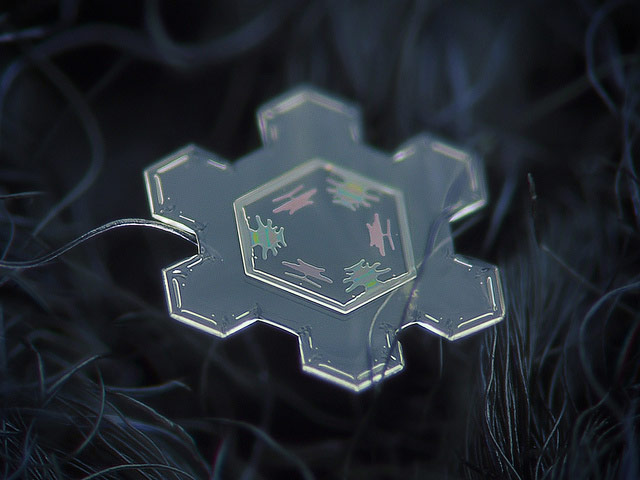
Alexey Kljatov takes amazing photographs of snowflakes. Infinite beautiful variation. The large versions are worth checking out.
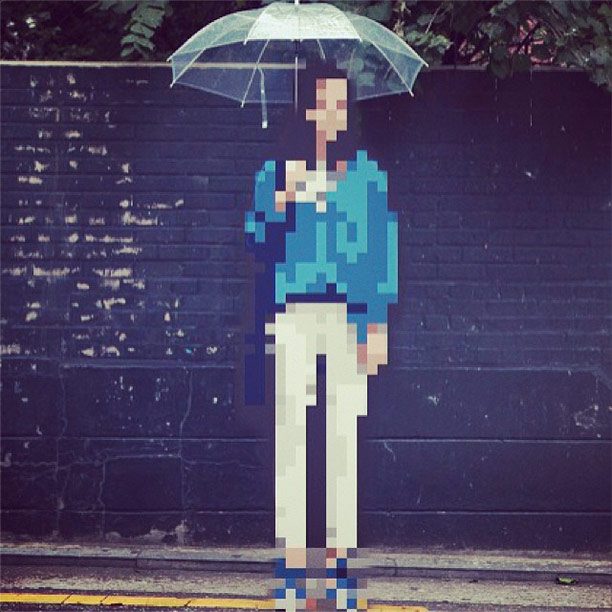
I Pixel U is an iOS app that lets you selectively pixelate people and objects in photos, creating the effect of 8-bit characters in the real world. Many examples are available on Instagram.
See also Aled Lewis’ Video Games vs. Real Life series. (via prosthetic knowledge)
I love these color typologies by photographer Emily Blincoe. This gold candy one is particularly fetching:
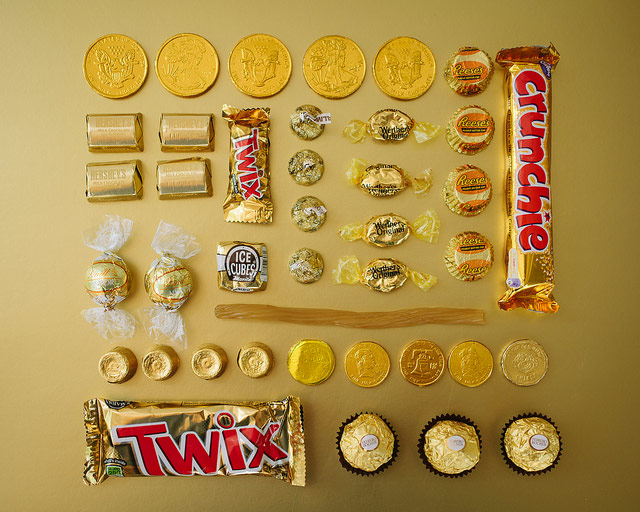
(via @mathowie)
Prolific and celebrated writer William T. Vollmann is a “devoted” cross-dresser.
Mr. Vollmann is 54, heterosexual and married with a daughter in high school. He began cross-dressing seriously about five years ago. Sometimes he transforms himself into a woman as part of a strange vision quest, aided by drugs or alcohol, to mind-meld with a female character in a book he’s writing. Other times it’s just because he likes the “smooth and slippery” feel of women’s lingerie.
He said his wife, who is an oncologist, is not thrilled with his outré experiments and keeps her distance. “Probably when the book comes out, it’ll be the first she’s heard of it,” he said. “I always try to keep my wife and child out of what I do. I don’t want to cause them any embarrassment.” He asked that his wife not be interviewed for this article.
Vollmann has collected self-portraits of himself as his female alter ego in The Book of Dolores. (via @DavidGrann)
In Focus has a selection of winning photos from Nikon’s Small World Photomicrography Competition. The award for most terrifying goes to Dimitri Seeboruth for his shot of a worker ant:
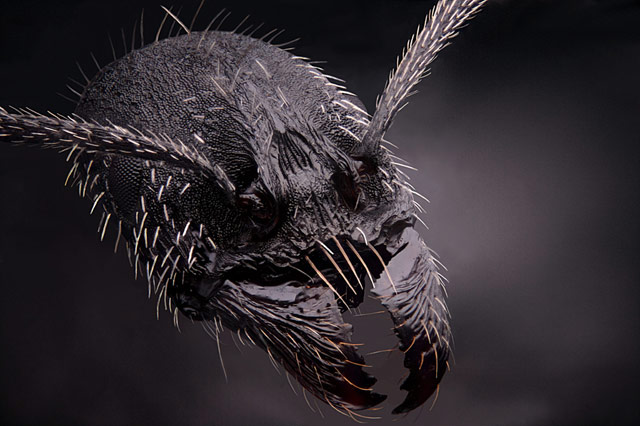
I, for one, welcome our new insect overlords.
Jay Zeamer and a group of fellow misfits collectively called the Eager Beavers were an American photoreconnaissance team in the Pacific theater during WWII. They flew their beat-up B-17 bomber into enemy territory to collection reconnaissance photographs. Roger Cicala shares the engaging story of their most noteworthy photo.
The only crew that volunteered, of course, was Jay Zeamer and the Eager Beavers. One of the crew, bombardier Joseph Sarnovski, had absolutely no reason to volunteer. He’d already been in combat for 18 months and was scheduled to go home in 3 days. Being a photo mission, there was no need for a bombardier. But if his friends were going, he wanted to go, and one of the bombardier’s battle stations was to man the forward machine guns. They might need him, so he went.
They suspected the airstrip at Buka had been expanded and reinforced, but weren’t sure until they got close. As soon as the airfield came in sight, they saw numerous fighters taking off and heading their way. The logical thing to do would have been to turn right and head for home. They would be able to tell the intelligence officers about the increased number of planes at Buka even if they didn’t get photos.
But Zeamer and photographer William Kendrick knew that photos would be invaluable for subsequent planes attacking the base, and for Marines who were planning to invade the island later. Zeamer held the plane level (tilting the wings even one degree at that altitude could put the photograph half a mile off target) and Kendrick took his photos, which gave plenty of time for over 20 enemy fighters to get up to the altitude Old 666 was flying at.
(via petapixel)
At In Focus, Alan Taylor surveys the state-of-the-art in robotics with a varied selection of photos. For example, here are two Big Dogs frolicking in the robot dog park:
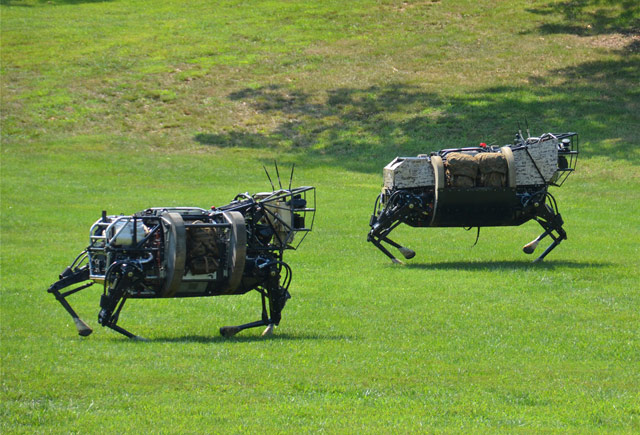
And better yet, Florian Lopes looks as though he’s enjoying his new bionic hand:
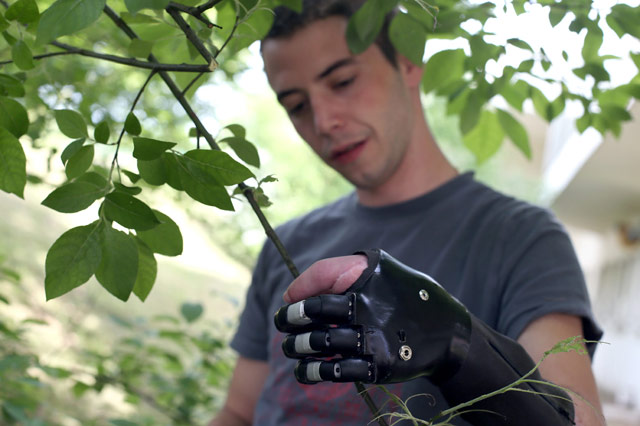
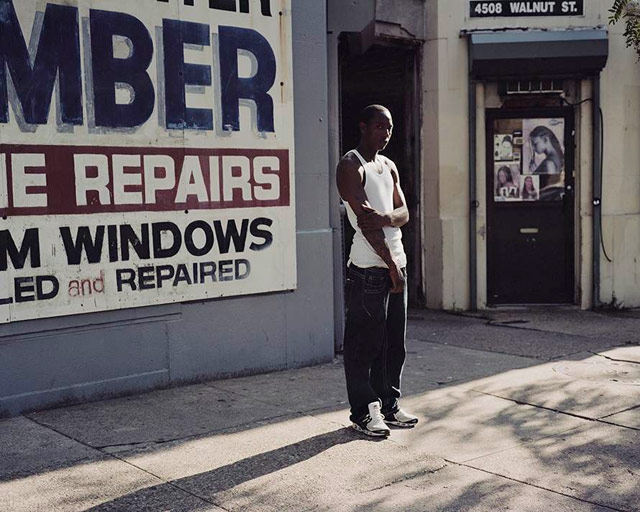
In her series City of Brother Love, Hannah Price photographs the men who catcall her on the street. A selection of her images and a short interview is available on The Morning News.
Once a guy catcalls me, depending on the situation, I would either candidly take their photograph or walk up to them and ask if I can take their photograph. They usually agree and we talk about our lives as I make their portrait.
An interesting approach to sexist heckling. Here’s another by jogger Anna Hart:
But sometimes, a heckler still makes himself heard, like the wheezing smoker on a park bench who called out to me: “I could give you a better workout, love,” as I ran past him earlier this week.
I suddenly thought of that 16-year-old stuck indoors on the treadmill, and turned around. “You know what I want?” I said, as he shrank back in alarm. “I want you to never, ever speak to another woman or girl like that, you pathetic old fool.” I was very sweaty, very pink and very angry, and he was plainly terrified.
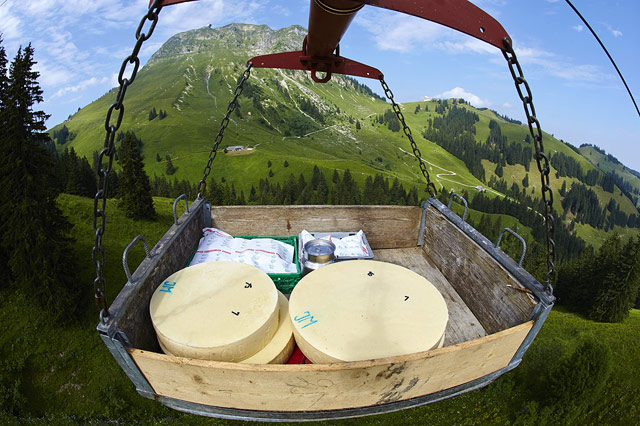
If you’re into cheese, you’ll want to take this photographic journey into a season with Swiss cheesemakers.
In Gruyeres, western Switzerland, from mid-May to mid-October, the fifth generation of the Murith family produces its distinctive mountain pasture Gruyere cheese. Each wheel of cheese weighs between 25 and 40 kilograms, and takes a minimum of six months to mature. The family produces 200 wheels each year to sell locally, using unpasteurized milk from their own herd of cows. Reuters photographer Denis Balibouse spent time with the Murith family over this past grazing season, capturing days and nights in the alpine pastures of Switzerland.
Over at The Planetary Society, Emily Lakdawalla highlighted an image taken by the Cassini spacecraft of Saturn separate from its rings.
This enormous mosaic showing the flattened globe of Saturn floating amongst the complete disk of its rings must surely be counted among the great images of the Cassini mission. From Earth, we never see Saturn separate from its rings. Here, we can see the whole thing, a gas giant like Jupiter, separated at last from the rings that encircle it.
Taking this idea one step further, I removed the rings completely, along with the “ringlight” lighting up the night hemisphere, creating a more-or-less pure look of what Saturn would look like without its rings.

Larger version is available on Mlkshk.
In Focus has a nice slideshow of photos of blimps, dirigibles, and airships, from the first flights in the early 1900s to the Hindenburg disaster to the blimps flying high over sporting events.

(via @alexismadrigal)
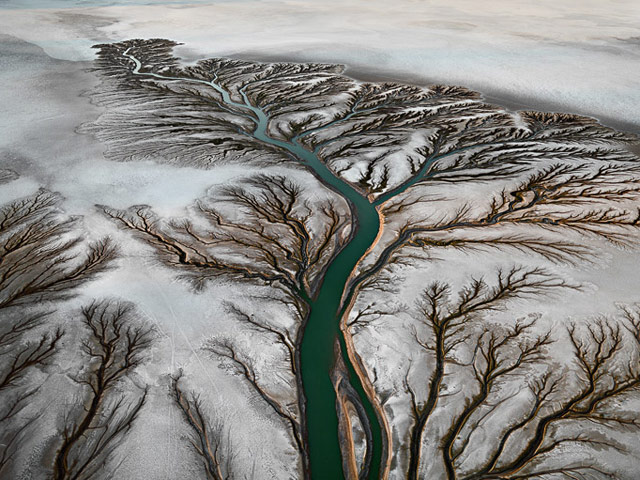
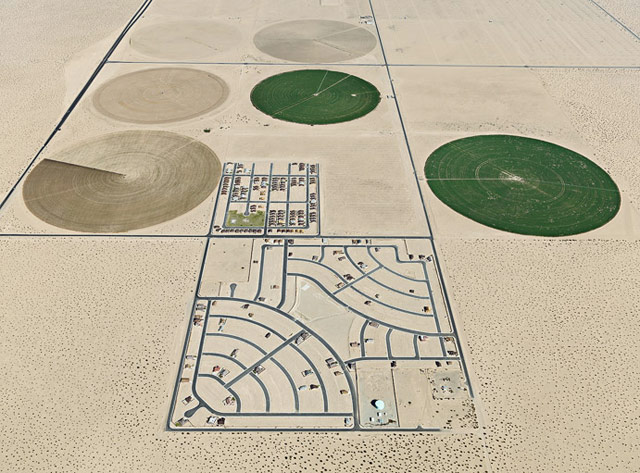
Photographer Edward Burtynsky’s latest project is called Water.
While trying to accommodate the growing needs of an expanding, and very thirsty civilization, we are reshaping the Earth in colossal ways. In this new and powerful role over the planet, we are also capable of engineering our own demise. We have to learn to think more long-term about the consequences of what we are doing, while we are doing it. My hope is that these pictures will stimulate a process of thinking about something essential to our survival; something we often take for granted — until it’s gone.
Water is on display this month in NYC at Bryce Wolkowitz Gallery and Howard Greenberg Gallery and in London at Flowers Gallery. There is also a book and an upcoming feature-length film:
(via pdn)
This group on Flickr shows just how fantastically designed Japanese manhole covers are. Here are some of my favorites:

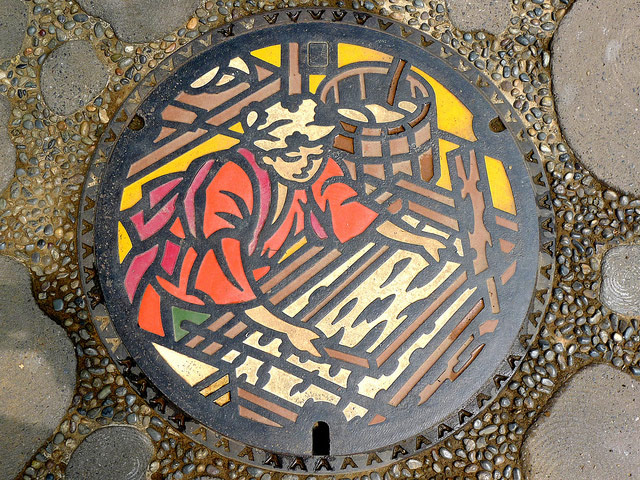


This is powerful and amazing (and upsetting): Project Unbreakable is a photography project that features images of sexual assault survivors holding signs showing what others (attackers, family members, cops, etc.) said to them about the assaults.
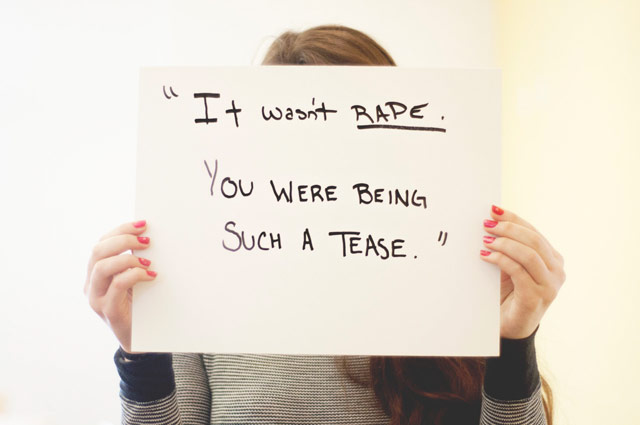
It’s difficult to pick the yuckiest bottom-of-the-barrel sludge here, but the comments from the police officers really get my dander up.
“If you were my daughter I would have killed you.” - Lady police officer while being interrogated
“If you don’t tell us how many people you’ve slept with, the ADA won’t even consider your case.” - Interviewing Dectective
“This is why we have underage drinking laws! THIS IS YOUR FAULT! If you hadn’t been drinking this wouldn’t have happened to you!” - St. Petersburg police when I tried to press charges
Sickening, sickening. The police are supposed to protect the vulnerable, not persecute them. (via @rebeccablood)
In the parlance of NYC graffiti enthusiasts, going “all city” means getting your stuff known all over the five boroughs. Now a group of designers are challenging each other to go “all RGB”, to make images that contain all of the 16.7 million colors that make up the RGB spectrum once each. This entry is amazing because it still looks like an actual photograph when you zoom out (many others do not):
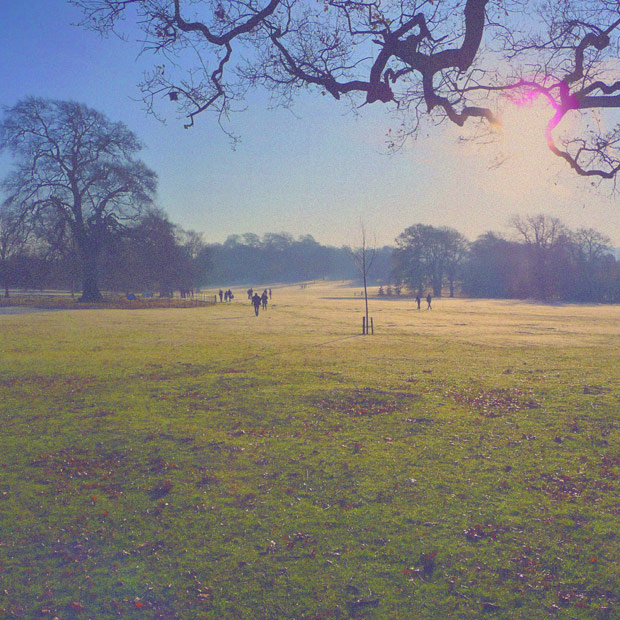
You can find many more entries on allRGB.com or make your own using this code on GitHub. (via digg)
NASA created this lovely high resolution view of the Moon doing one complete rotation using footage from the Lunar Reconnaissance Orbiter.
(via @Colossal)
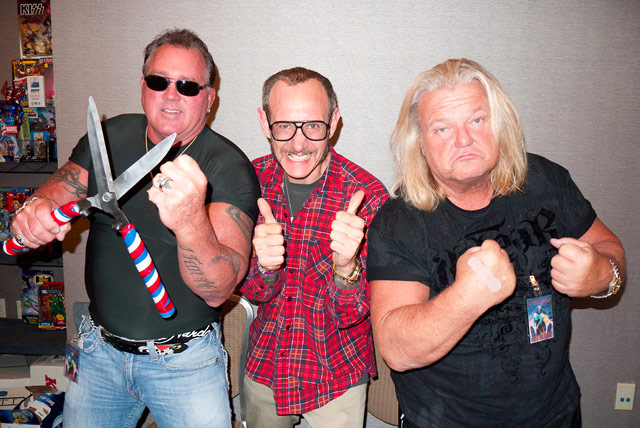
I watched a lot of pro wrestling when I was a kid and this photo of Brutus “The Barber” Beefcake, Greg “The Hammer” Valentine, and fashion photographer Terry Richardson is just too much for me. If nostalgia truly is death, someone better make some arrangements for me.
(If you’re not with me on this whole reminiscing about 1980s professional wrestlers thing, Richardson also recently took a photo of Miley Cyrus eating a salad, so you’re basically all caught up on current events and you’re welcome.)
I have a soft spot for photography that reaches, seemingly impossibly, back into time…e.g. early color photography. It’s an inexpensive form of time travel. The American Revolution took place back in the days before photography and the way we remember it visually is something like this:
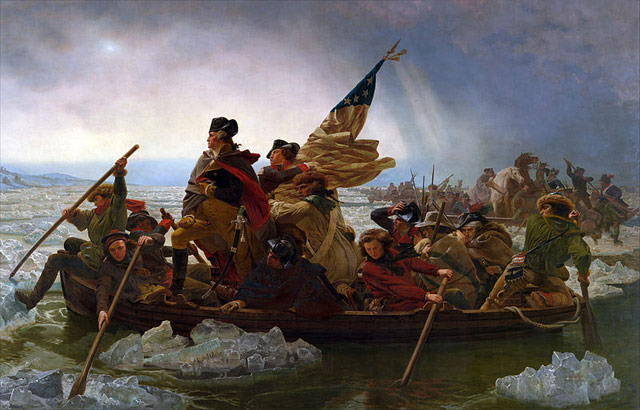
But, some Revolutionary War participants lived long enough to have their daguerreotypes taken in the 1850s and 1860s. This is a photo of Lemuel Cook, the last official surviving veteran of the Revolution1, taken sometime before his death in 1866.
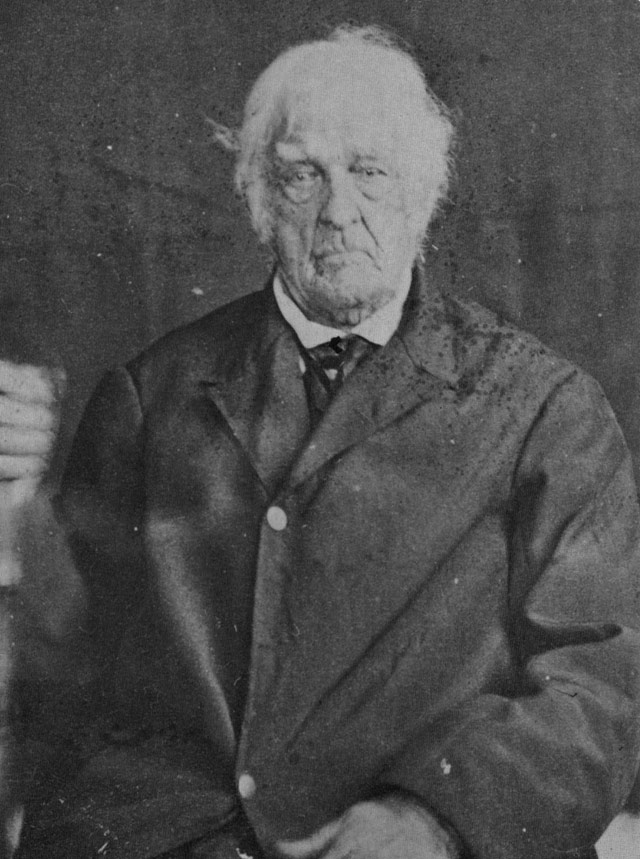
The source of many of these photos is a book published in 1864 by E.B. Hillard called The Last Men of the Revolution. The book contains six photos of surviving war vets and brief biographies of each man. (via @ftrain)
[1] Daniel Bakeman lived until 1869 but could not prove his service in the war. However, Congress passed a special act in 1867 that provided him with a war pension. Bakeman’s longevity (he lived to 109) contributed to another astounding achievement: he and his wife Susan had the longest marriage on record, 91 years. Their marriage began 3 years before the Revolution and continued until Susan’s death in 1863, right in the midst of the Civil War. Amazing. ↩
In Focus has a collection of some of the most excellent Red Bull Illume Photo Contest winners. And as you’d expect, they are about as Red Bull as you can get. Great shots.
You’ve probably seen some of these before, but the 1600+ color photos from the 1930s & 1940s uploaded by the Library of Congress to Flickr are a wonderful look at America around the time of WWII. Here are a few quick favorites:


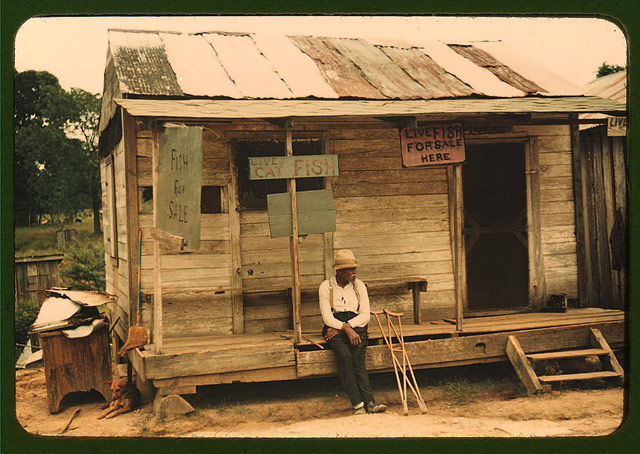
Romanian photographer Maximilian Teodorescu recently caught the International Space Station in transit across the Sun.

Teodorescu has also taken photos of the ISS in transit across the Moon.
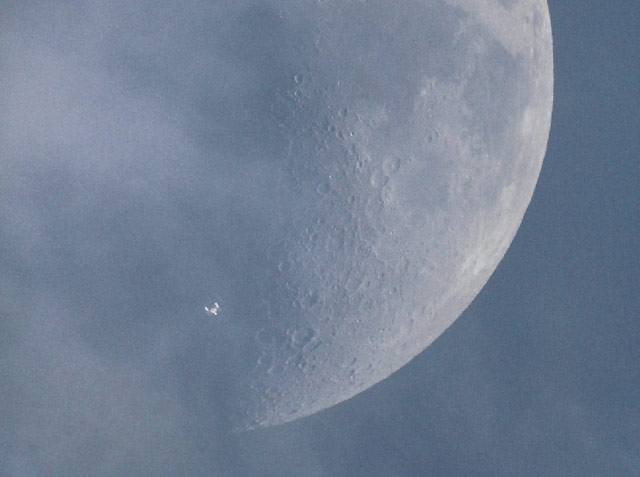
These photos make the ISS seem tiny and huge all at the same time. And be sure to click through on the links to see the full-sized photos.
Nice peek into the process of Photoshopping an old photo to make it look new again:
(via @DavidGrann)

A frog using a leaf as an umbrella in a rain storm. Shot by Penkdix Palme.
Today’s fun game is: Golf Ball Innards or Bowl of Gelato? Let’s get started. Is this a creamy bowl of lemon-lime pistachio gelato or the inside of a golf ball?
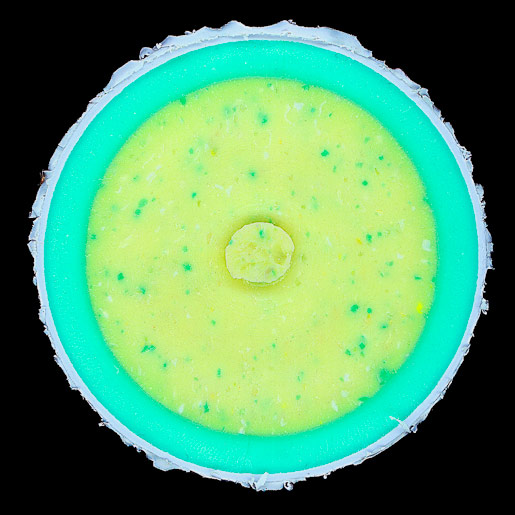
Ok, that was an easy one. How about this one…is this half of a crazy-ass golf ball or a delicious bowl of watermelon bubble gum gelato?
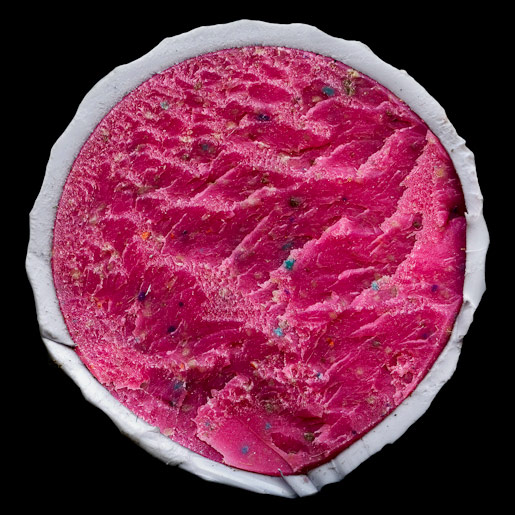
It’s gotta be gelato, right? Ok, last one: gelato or cross section of a golf ball from a project called Interior Designs by photographer James Friedman?
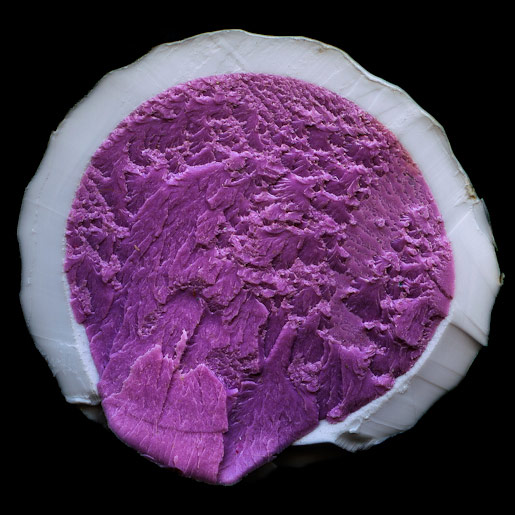
Yum, I can almost taste the blueberries through the screen. Well, that’s all the time we have today, folks. You’ve been a great group of contestants, and we hope to see you next week on Golf Ball Innards or Bowl of Gelato? (via edible geography)
Thomas Prior’s photographs from the National Pyrotechnic Festival in Tultepec, Mexico are pretty much exhibit A in why your parents didn’t want you and your idiot friends to play with fireworks.
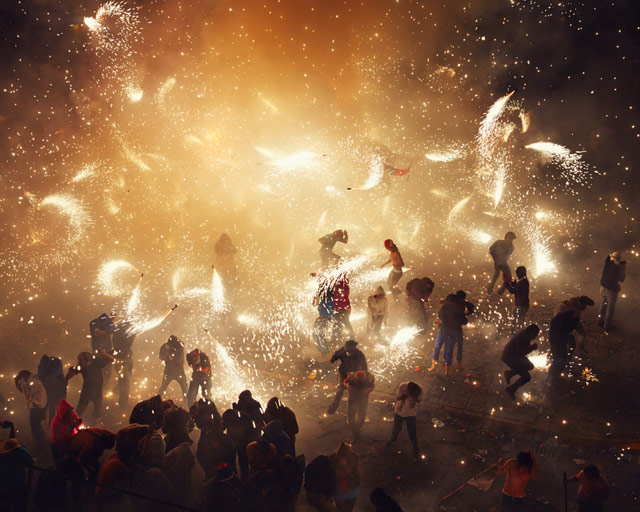
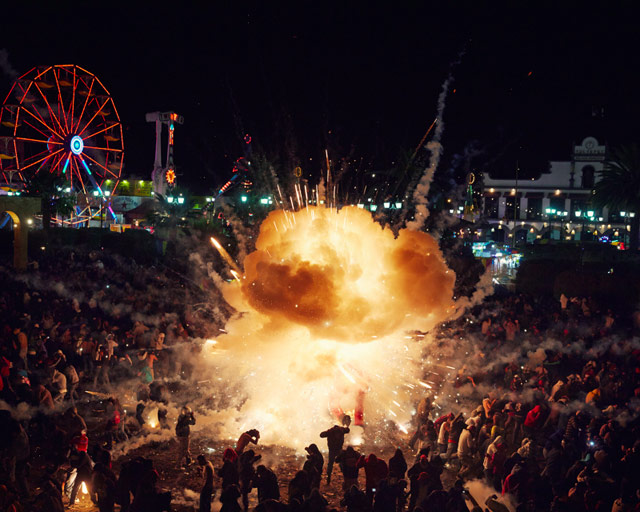
(via wired)
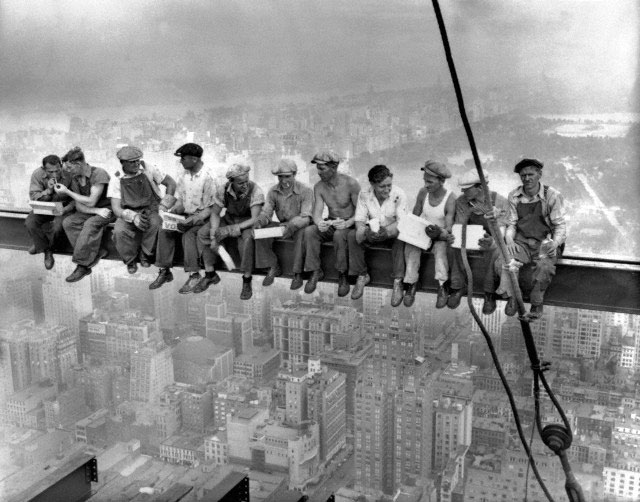
That’s the iconic “Lunch atop a Skyscraper” photo taken in 1932 during the construction of the RCA Building (aka 30 Rock) in NYC. Eleven construction workers eating lunch on a steel girder 840 feet in the air. The shot was a PR stunt to drum up excitement around the near completion of the new skyscraper…no one even knows for sure who took the photo because it was likely a multiple photographer situation. On the same day the lunch photo was taken, some of the same men were photographed taking a nap on the same girder:
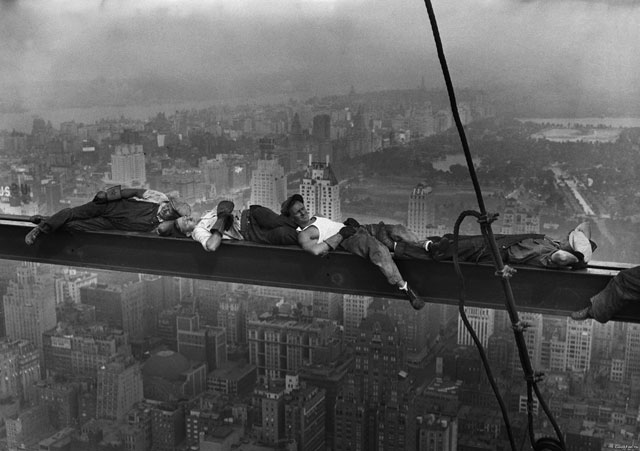
Photographer Clayton Cubitt and Rex Sorgatz have both written essays about how photography is becoming something more than just standing in front of something and snapping a photo of it with a camera. Here’s Cubitt’s On the Constant Moment.
So the Decisive Moment itself was merely a form of performance art that the limits of technology forced photographers to engage in. One photographer. One lens. One camera. One angle. One moment. Once you miss it, it is gone forever. Future generations will lament all the decisive moments we lost to these limitations, just as we lament the absence of photographs from pre-photographic eras. But these limitations (the missed moments) were never central to what makes photography an art (the curation of time,) and as the evolution of technology created them, so too is it on the verge of liberating us from them.
And Sorgatz’s The Case of the Trombone and the Mysterious Disappearing Camera.
Photography was once an act of intent, the pushing of a button to record a moment. But photography is becoming an accident, the curatorial attention given to captured images.
Slightly different takes, but both are sniffing around the same issue: photography not as capturing a moment in realtime but sometime later, during the editing process. As I wrote a few years ago riffing on a Megan Fox photo shoot, I side more with Cubitt’s take:
As resolution rises & prices fall on video cameras and hard drive space, memory, and video editing capabilities increase on PCs, I suspect that in 5-10 years, photography will largely involve pointing video cameras at things and finding the best images in the editing phase. Professional photographers already take hundreds or thousands of shots during the course of a shoot like this, so it’s not such a huge shift for them. The photographer’s exact set of duties has always been malleable; the recent shift from film processing in the darkroom to the digital darkroom is only the most recent example.
What’s interesting about the hot video/photo mobile apps of the moment, Vine, Instagram, and Snapchat, is that, if you believe what Cubitt and Sorgatz are saying, they follow the more outdated definition of photography. You hold the camera in front of something, take a video or photo of that moment, and post it. If you missed it, it’s gone forever. What if these apps worked the other way around: you “take” the photo or video from footage previously (or even constantly) gathered by your phone?
To post something to Instagram, you have the app take 100 photos in 10-15 seconds and then select your photo by scrubbing through them to find the best moment. Same with Snapchat. Vine would work similarly…your phone takes 20-30 seconds of video and you use Vine’s already simple editing process to select your perfect six seconds. This is similar to one of my favorite technology-driven techniques from the past few years:
In order to get the jaw-dropping slow-motion footage of great white sharks jumping out of the ocean, the filmmakers for Planet Earth used a high-speed camera with continuous buffering…that is, the camera only kept a few seconds of video at a time and dumped the rest. When the shark jumped, the cameraman would push a button to save the buffer.
Only an after-the-fact camera is able to capture moments like great whites jumping out of the water:
And it would make it much easier to capture moments like your kid’s first steps, a friend’s quick smile, or a skateboarder’s ollie. I suspect that once somebody makes an easy-to-use and popular app that works this way, it will be difficult to go back to doing it the old way.
Due to the increasing ubiquity of connected cameras, writes Nick Bilton in the NY Times, photography is shifting away from documentation to communication.
Photos, once slices of a moment in the past — sunsets, meetings with friends, the family vacation — are fast becoming an entirely new type of dialogue. The cutting-edge crowd is learning that communicating with a simple image, be it a picture of what’s for dinner or a street sign that slyly indicates to a friend, “Hey, I’m waiting for you,” is easier than bothering with words, even in a world of hyper-abbreviated Twitter posts and texts.
“This is a watershed time where we are moving away from photography as a way of recording and storing a past moment,” said Robin Kelsey, a professor of photography at Harvard, and we are “turning photography into a communication medium.”
Dave Pell worries that the realtime availability of all these photos is getting in the way of our experiencing selves.
Maybe it was a bad angle. Maybe I didn’t get his good side. Maybe he just didn’t have that surfer vibe. Whatever it was, the photo wasn’t all that cool. Given time to reflect (even the few days I used to get between my own childhood birthdays and my mom picking up a set of 4x6 prints at the local pharmacy), my son probably would’ve developed a version of that day that had him riding a giant a wave, looking like a cross between Laird Hamilton and Eddie Vedder. Instead, he pretty much looked like a landlocked three year-old on a beach-bound surfboard who was suffering from a rare — but particularly punishing — bad hair day.
The instant my son looked at the image, his imagination-driven perception of himself was replaced by a digital reproduction of the moment he had just experienced. He had a few seconds, not nearly long enough, to create is own internal version of what that moment looked — and by extension felt — like.
Newer posts
Older posts









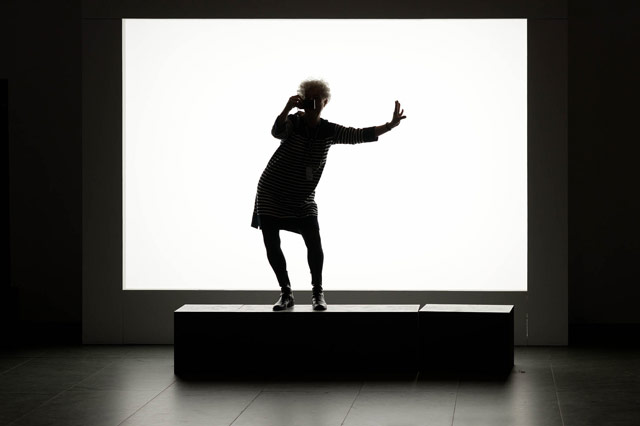
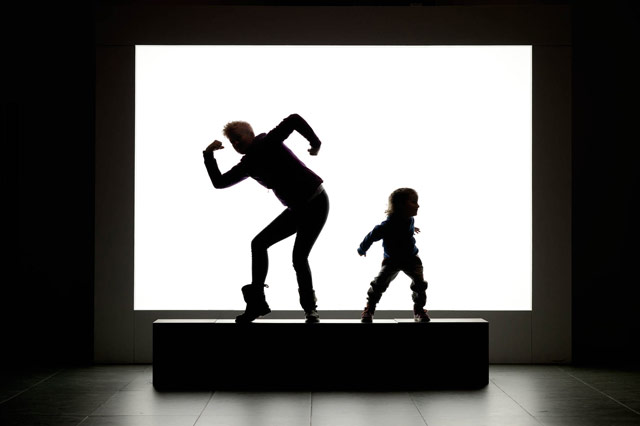































Stay Connected